Since it was discovered, Sonic X-treme has always been a legendary Sega project. From its unusual visual style to the largely unknown nature of the story, the game has been seen through a veil of mystery. It is a game synonymous with the industrial zeitgeist of mid-nineties Sega, and a look into what could have been for the Sonic franchise. But is this unreleased game more influential to modern platformers than we may think? Or what was working on it exactly like? Hit the jump as we interview Christian Senn and find out!
The early to mid nineties were certainly a unique time in the videogame business. The Super Nintendo had proven itself the more widely adopted console of the generation. Even though Sega certainly had a strong market share, their ambition ultimately led to their downfall. The many attempts to build upon the Genesis with the Sega-CD and 32X proved to be unsuccessful financially as well as creatively. The 2 add-ons absolutely had their admirers, but Sega never realized what they had on their hands. Development slowed considerably on both systems while Sega focused much of their resources to the Sega Saturn in 1994. The Saturn was proving to be a big success in Japan, selling about 170,000 on the first day alone. Sega wanted the United States to realize what a big deal this was. While Sega was not the first company to offer a 32-bit console, they were before Nintendo, and that was most important.
The Saturn launched in the US on May 11th and in Europe on July 8th, 1995 to a somewhat enthusiastic reception. While many customers and analysts were thrilled at Sega’s entry into the next generation market, the games offered at launch were divisive. The biggest selling point of the Saturn was its ability to deliver a true arcade experience. Virtua Fighter, Virtua Cop, Daytona USA were all flagship products for the system and really carried the system during the first year. The other games available on the Saturn were largely localisations of undeniably Japanese titles. Games like Clockwork Knight were incredibly fun and successful enough to be mildly franchised, but the Saturn ultimately lacked a face, a mascot if you will.
The writing was on the wall that Sega needed a new Sonic game for their console. While development was winding down for the 32X and Sega-CD projects, Sega indeed had an ace up its sleeve. The Sega Technical Institute was an internal development team established as a Western offshoot of Sonic Team in the early nineties. The original purpose for the STI team was to handle the development of first party sequels and spinoffs. Sonic the Hedgehog 2 was one of the first projects, along with Sonic 3 and Sonic Spinball. When these proved successful, the team was eventually given jobs for original titles. Among these original works were some exceptional sleeper hits like Comix Zone and The Ooze. Sega Technical Institute was quickly becoming Sega of America’s magic bullet of software development, over time rebuilding trust in the dwindling brand with original work. It is absolutely ironic that the team would ultimately crumble trying to bring a proven franchise to the Saturn.
Sonic X-treme began its life as a potential 32X title known then as Sonic Mars. The game was to focus on a z-space plane with the camera positioned behind the back of Sonic. It could probably be described as a bonus level of the base Sonic games protracted and fully realized. It was the first time Sonic was not developed as a side-scroller (or pinball game). Work on Sonic Mars was quickly transitioned into what became known as Sonic Saturn and SonicBOOM before eventually settling on Sonic X-treme. The project’s biggest challenge was the fundamental design. How was anybody supposed to bring Sonic, a beloved 2D side-scroller, into the third dimension all while retaining the spirit of the franchise? It wasn’t going to be easy for anyone involved.
Before breaking off onto his own as a designer and consultant, Christian Senn was a prominent employee at Sega Technical Institute. Sega Addicts was able to get an interview with the talented and legendary figure about this mysterious project:
Sega Addicts: What are you working on lately?
Christian Senn: I am currently hard at work on an unannounced title for Big Red Button Entertainment.
SA: Would you say your time at Sega Technical Institute was beneficial to your career, either by way of gaining experience or getting your foot in a large door?
CS: All of my experiences, seemingly good or bad, from childhood on through my jobs and relationships have shaped my personality, work ethic, interests, and relationships that have ultimately shaped my career. Sega Technical Institute was a huge opportunity enabling me to work at a well-known company on a major brand. My experience there transformed me personally and professionally. Among many other things, I learned the value of balance between work and life, teamwork, organization, delegation, experience, humility, perspective, and people. These lessons never end though, so every new year brings new challenges, triumphs, setbacks, and lessons to learn from and appreciate.
SA: What is a game you worked on there, released or not, that you are still very proud of?
CS: I worked very hard on Comix Zone, Sonic X-treme, and Geist Force while at Sega. Comix Zone was about 2D art and animation for levels, characters, and special effects. Sonic X-treme was about art direction, character design, game design, level design, and team coordination. Geist Force was about art production management (managing the art staff to facilitate the best work on time). Each project enabled me to work with great people on very interesting and rewarding material. I was also challenged in different ways that helped develop and improve skills in order to adapt and, as much as possible, overcome.
Having come from a small company prior to a big company like STI, I learned the value of working at both. Big and small, success and failure. These extremes helped teach me perspective and… to know when to hold ’em, know when to fold ’em, know when to walk away and know when to run. It is this perspective that ultimately allows my experience and talent to provide better results and more enjoyment.
I am proud of my contributions to these projects, whether more tangible like artwork, or harder to gauge like inspiring others. Sure, I could have done better with any of it, but I always tried to give it my all. That comes from my passion for creating. Along with that is a strong driver for perfection. The trick with passion is to keep enough perspective to be efficient and not alienate others, whether by being too demanding or not understanding enough of others’ perspectives, etc. I had once expected the lessons to cease following college… Nope!
SA: How many different Sonic games, or iterations of games, were you involved with?
CS: While at STI, I worked on one main Sonic game: Sonic X-treme. This game went through many iterations, working titles, team members, and target platforms. Its 3 year life cycle attempted to boldly go where no person had gone before, at least with a Sonic game. It failed to finish and reach market, but has had far-reaching implications on my career and has had a surprising effect on a number of interested fans. Sonic is quite a brand, and one I feel privileged to have had the opportunity to work on, especially at such a young age.
SA: Was something like the STI a rare thing in those days?
CS: As far as I know, having a video game company division with one part dedicated to an offshore group like the Sonic Team was rare. I’m very thankful for the opportunity to have interacted with the Sonic Team while being a part of STI.
SA: Do you feel the nature of game development there was different than it normally is?
CS: I don’t think the nature of game development in either part of STI was unusual, but they were certainly different from one another. At various points in STI’s history, there was crossover between the two parts. For Sonic 2, some of the other side provided assistance to the Sonic Team. Near the tail end of Sonic X-treme, Yasuhara-san and Aoki-san were enlisted to help the project.
SA: Could you describe a day in your life as a developer?
CS: While at STI, I tended to work very late on into the night and get into work around 11am. These days, I’m at work by 6am and leave between 6 and 7pm. I still work long hours, but I start much earlier to get tangible work done before the hustle and bustle begins around 10am. For the rest of the day, I typically spend most of my time in meetings, managing my department, and following up on whatever seems needed. I am spent by the time I leave the office every day. By the end of the week, I collapse… ready to recharge my batteries over the weekend, and begin anew the following Monday. Usually I sneak in some work over the weekend because of the sheer amount that needs to get done though, but I work hard to balance that with exercise and my personal life.
SA: What was the story of Sonic X-treme? Did the narrative motivate the design or the distorted visual perspective?
CS: There were numerous storylines for Sonic X-treme. What motivated the game design ranged from the narrative to some game mechanic or element that seemed the strongest and most interesting. Michael Kosaka’s Sonic Mars story helped direct my enemy character designs for the game. Initially they were very “computer” and “tech” inspired but gradually fit more in line with the classic Sonic enemy style as developed between Sonic 1-3. My Sonic Saturn storyline definitely affected the game design by requiring that Sonic rescue not only his friends but Robotnik, too – from a new threat, the Chaos Elementals. Later on, my Sonic Twist storyline was inspired directly by Ofer Alon’s twisting world concept for the game. It really depended on the storyline and what stage of development the game was in at the time, but rarely did the story and gameplay lack strong ties to one another.
SA: What are your thoughts on Sonic Lost World? Do you see any similarities to what you were trying to achieve with Sonic X-treme?
CS: Sonic Lost World has received a lot of attention with some people saying it was a copy of Sonic X-treme, others saying it was a copy of Mario Galaxy, while still others saying Mario Galaxy was inspired by Sonic X-treme. Regardless of what truth exists, one thing is for sure: Most ideas we have and think are unique have been thought of before. What makes the difference is when an idea is realized. Sonic X-treme never made it to market, and if it had, perhaps it could have influenced games in ways we can’t imagine. But Mario Galaxy made it to market first, and is a great game. I think Sonic Lost World delivers an interesting and compelling hybrid between Sonic and inspirations from Mario Galaxy. The result is a very fun experience that allows players to progress at their own pace, and can explore crazy new types of gameplay never before conveyed to any great degree in a Sonic game.
CS (continued): If I had to examine Sonic Lost World in relation to Sonic X-treme, some interesting things could be noted. First, the name: Sonic Lost World almost seems like it encompasses all that Sonic X-treme represents… a lost world that was tucked away never to be sold on shelves. Next, the concept of rotating the world only about the axis that leads in and out of the screen – this was Ofer’s idea that really transformed how we thought of Sonic X-treme. This idea was not new, however, as it had appeared in a number of games before – just not as a base gameplay concept to affect the entire game experience.
Some have noted that the Deadly Six in Sonic Lost World seems oddly reminiscent of the Chaos Elementals in Sonic X-treme. I think one has to look deeper than these surface similarities though. The Deadly Six relate in color to the six Chaos Emeralds as the Chaos Elementals were intended, though the latter directly tied into the emeralds. Both related to an existing trope in Sonic’s universe. Rotating the world for a Sonic game actually started in the very first Sonic game… in the bonus rounds! It is interesting to speculate whether Sonic X-treme inspired other games, having had videos of its in-game development online for years… whether there is any truth to it?
All in all, I was excited when I first learned about Sonic Lost World and believe that Sonic fans, and perhaps Mario ones too, will find it quite an intriguing title!

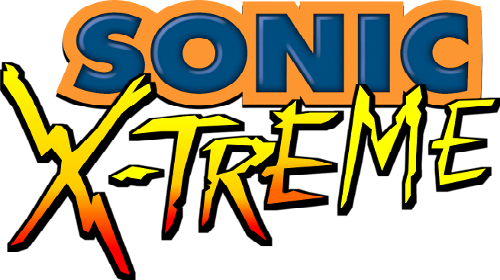
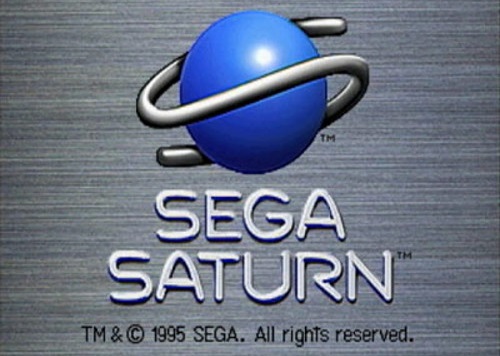

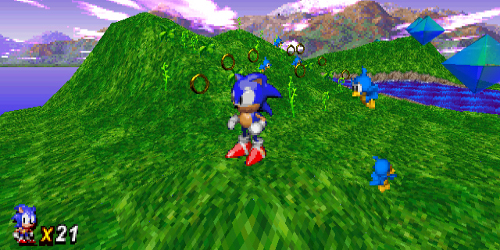
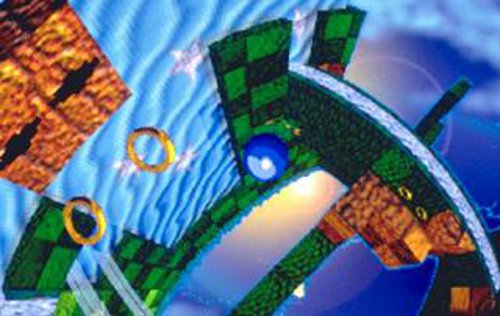

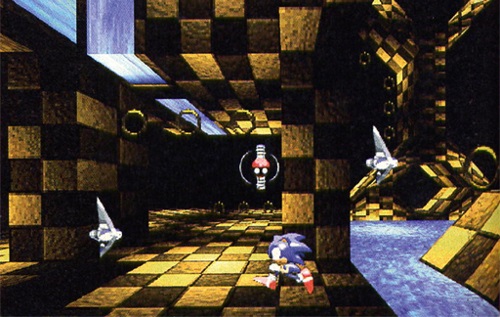
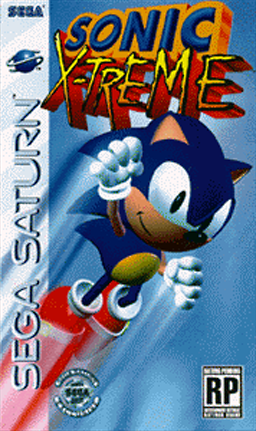
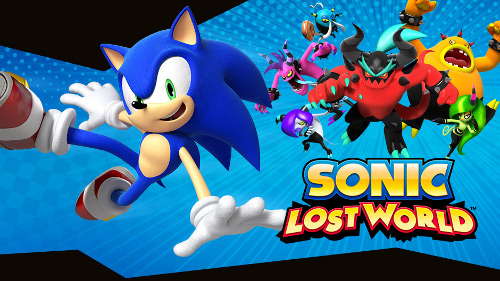

Great interview, Alex! It’s pretty interesting to hear about the evolution of the game. It’s also awesome to hear that Mr. Senn sees everything involving Sonic X-treme as a learning experience rather than focusing on the fact that it was never released. Seeing those old screenshots always brings a tear to my eye though. Oh, what could have been…
This is a fantastic interview, nice work! But like Scott, I can’t help be get a bit wet around the eyeballs whenever reading about Sonic X-Treme.